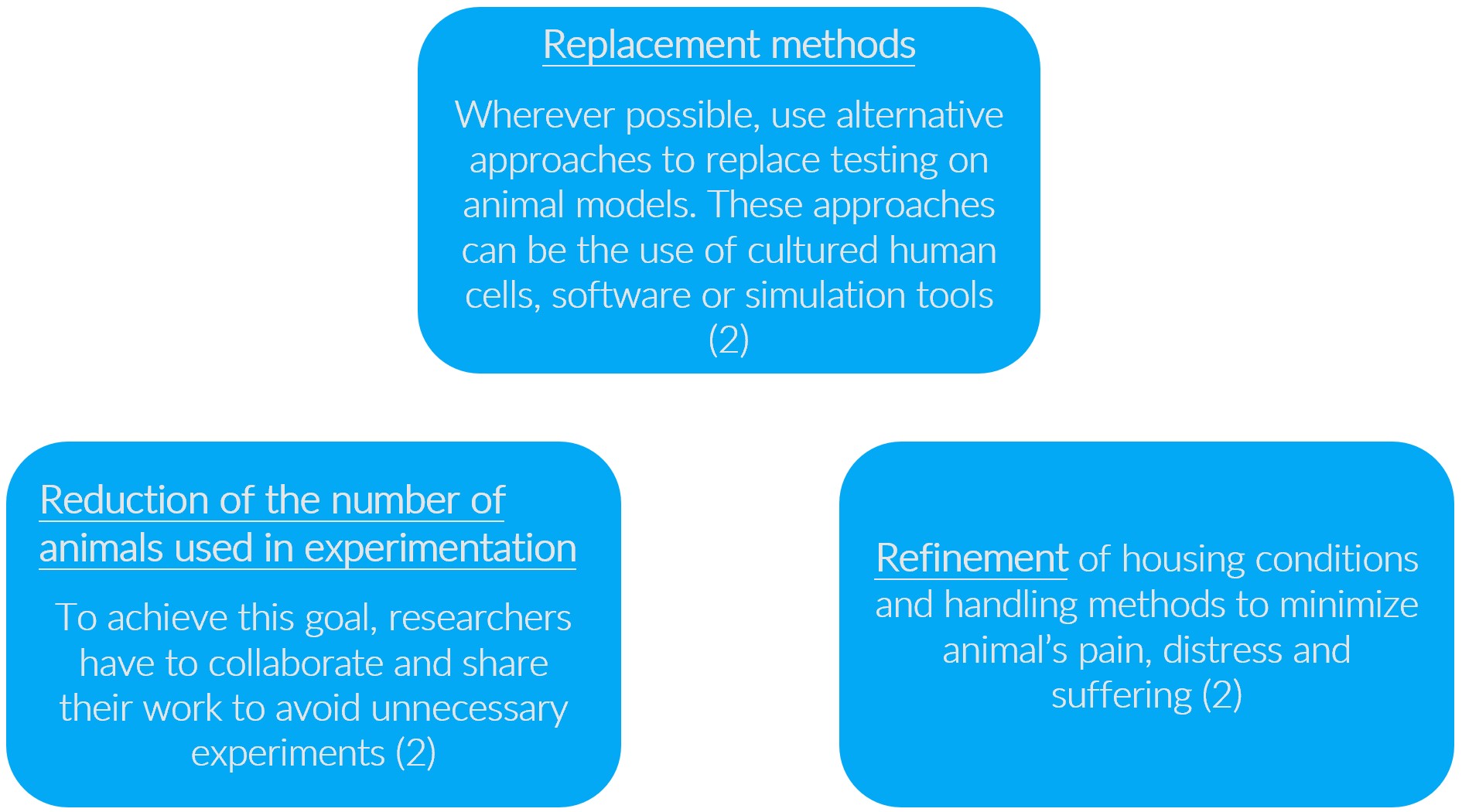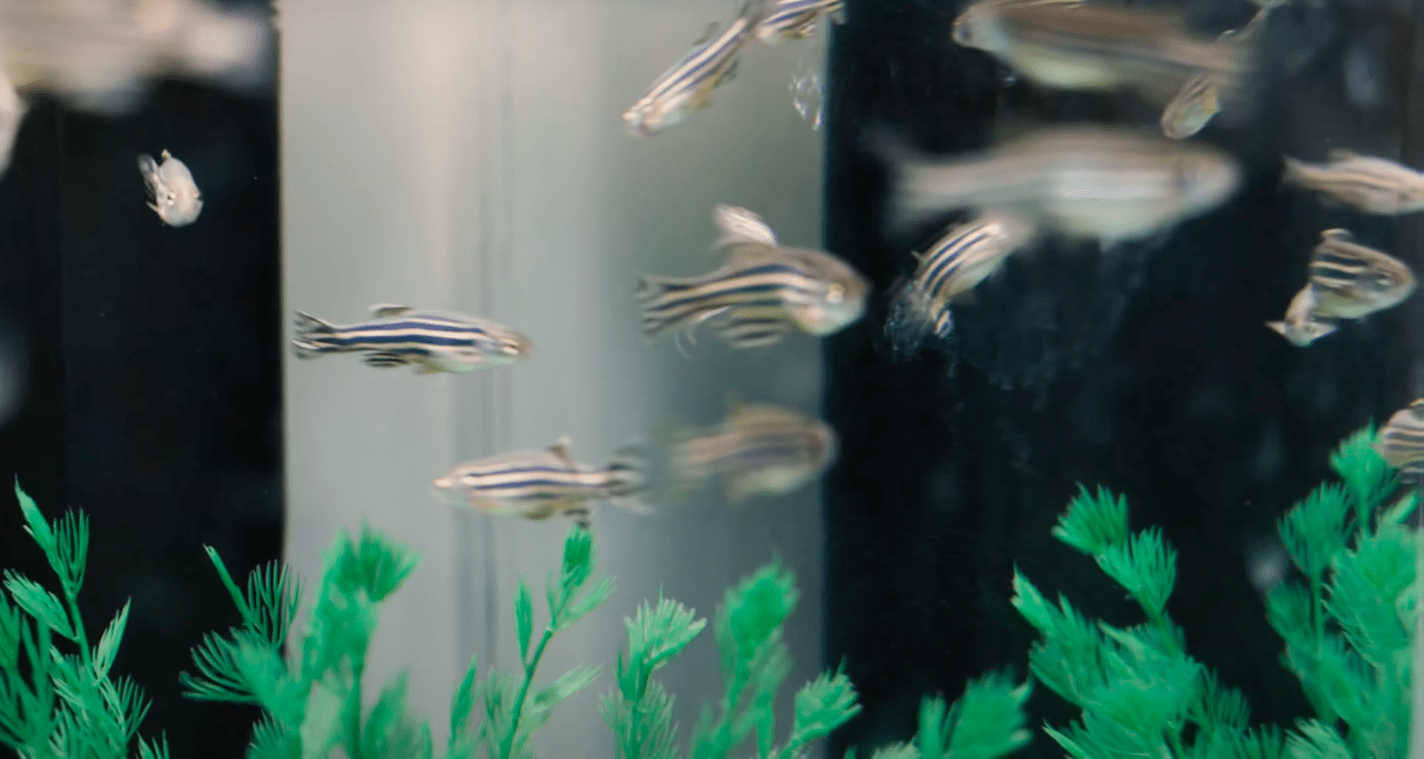November is ending and in this period of late autumn people often have difficulties finding activities to keep them occupied. Rainfall and cold force us to stay at home and without inside activities, we can easily get bored. And what about zebrafish in their tank? Can they also get bored?
This article of the month aims to highlight the importance and impacts of enrichment in fish tanks on zebrafish boredom, anxiety and cognition. Enrichments are also part of the 3R’s (Replacement, Reduction and Refinement) principles.
3R's principles
The concepts of the 3R’s principles were introduced in 1959 by William Russell and Rex Burch (1) but it is only since 2014 that these principles have received increasing interest (PubMed). The 3R’s stand for “Replacement”, “Reduction”, “Refinement”.

In Switzerland, the Swiss 3Rs Competence Centre (3RCC) is responsible for promoting the establishment of a 3Rs culture. On the 6th of November, a Zebrafish Refinement Webinar was organized to provide information and facilitate the networking regarding refinement strategies for improving zebrafish welfare in laboratories. During this event, the EggSorter was presented as a significant tool, highlighting the essential role of automation in normalizing and promoting the 3Rs in zebrafish research when using the zebrafish embryo model.
Natural environment of zebrafish
Zebrafish are native from India, Pakistan, Nepal, Bangladesh, Sri Lanka and Myanmar. They live in streams, still pools, rice paddies, drainage ditches and stock ponds, which are characterized as shallow and slow moving water. They are mainly found in the margins, where the vegetation is relatively abundant (3,4). In the bottom of the stream or pool, mud, sand or gravel can be found (4).
The structure of their habitat indicates a connection to human activities. This could be explained by the use of fertilizers for rice cultivation. Fertilizers may promote the growth of zoo- and phytoplankton. Their diet consists of insects, small crustaceans, zooplankton, algae, plant material and detritus. In fact, they are omnivorous (4).
If you want to learn more about the natural habitat of zebrafish, you can find more information in our article “Where do our aquatic models come from?“.

Enrichments
Enrichments are a combination of stimuli that provide a better choice of activity and a greater control over social and spatial stressors (3). They are used to improve animal welfare (5) and so to respond to the “refinement” point of the 3R’s principles. Animal welfare includes the expression of the natural behaviors, the health and the positive mental state (5). A well welfare is an important strategy for the validity and reproducibility of the experiment and it allows positive modulation of the brain morphology, physiology and behavior (3). Additionally, several other effects have been observed (3,5) :
- Reduction in anxiogenic behaviors
- Increase exploration
- Greater fertility and fecundity
- Faster rate of learning
- Better memories
- Ability to discriminate between similar spatial environment
- Increase in overall brain size
Interestingly, zebrafish are able to feel boredom, which is defined by a negative state caused by a lack of behavioral opportunities. In the absence of opportunities for positive engagement, animals can slide into inescapable boredom and poor welfare (6). In fact, some experiments show that zebrafish prefer enriched compartments and that they engage voluntarily in cognitive stimulation opportunities (3,5,7). But differences in preferences exist.
Male and female zebrafish show different order in preferences (7) and not all novel objects are equally captivating to zebrafish. Curiosity, and so interest, is associated with boredom-avoidance (6). Preferences are measured by attraction to the object, latency to approach the object, social dynamics and diving behavior which is a stress indicator (6).
Enrichment can be characterized in 5 groups (5):
Zebrafish are a highly social species that live, in the wild, in groups. Researchers found that the major benefit in link to the welfare is that individuals living in groups experience a faster recovery from stress.
In tanks containing plants, shelters or structures, zebrafish present less stress, less anxiety, and an increase in exploration behavior and in social cohesion. These effects may arise due to increased opportunities for seeking refuge from social interactions, disturbances, water flow and light.
The nutritional enrichment can be provided by living food, a varied diet or by variation in feeding frequency.
Opportunities for exercise or to exert control over their environment are known to improve learning ability and to reduce anxiety levels. Water flow can represent a good occupational enrichment.
This category includes visual, olfactory, auditory and tactile enrichment. Adding an image of a substrate or landscape can have physiological impact such as the production of more eggs. Changes in light level such as dawn and dusk phases, the listening of classical music or the installation of a water flow (tactile stimulation) help to decrease anxiety, and to improve welfare.
Some fish facilities or laboratories have identified challenges associated with the implementation of enrichment strategies.Enrichment can increase variation in data obtained in experiment, it can make tank cleaning more difficult creating some problems related to the hygiene of the tanks (7), and the chemical composition of the water can also change because of the oxidation of the enrichment placed in tank (3,5). They also point to the contribution of enrichment into the spread of disease by creating more surface area for biofilms and pathogens to grow (5).
To avoid inserting foreign objects into aquariums, placing images against the walls of the aquarium can be a good alternative (7).
Conclusion
Refinement is one of the 3R’s, together with Reduction and Replacement. In fish facilities or in laboratories using fish, refinement is less commonly employed and less well-known compared to the refinement practices for mammals. One of the reasons behind this fact, may be because of the historical perception of fish as primitive or lower vertebrates (6). But as we explore in this article, zebrafish can be bored, can feel anxiety and also experience stress.
A major improvement in welfare has been shown in zebrafish living in tanks with enrichments. Some of these improvements involve an increase in social cohesion or an increase in exploration behaviour (5).
At the moment, there is no standard for the installation of efficient enrichment. The establishment of such practices in a standard way, would enhance interest in the principle of refinement and allow greater reproducibility between experiments. To reach this objective, continued research about zebrafish, its native environment and its behaviour is of great importance.
References
- Tannenbaum J, Bennett BT. Russell and Burch’s 3Rs Then and Now: The Need for Clarity in Definition and Purpose. J Am Assoc Lab Anim Sci. 2015;54(2).
- 3RCC. Swiss 3R Competence Center. [cited 2023 Nov 23]. 3Rs principle in animal research. Available from: https://swiss3rcc.org/the-3rs-in-switzerland
- Volgin AD, Yakovlev OV, Demin KA, De Abreu MS, Rosemberg DB. Understanding the Role of Environmental Enrichment in Zebrafish Neurobehavioral Models. 2018 [
- Parichy DM. Advancing biology through a deeper understanding of zebrafish ecology and evolution. eLife. 4:e05635.
- Stevens CH, Reed BT, Hawkins P. Enrichment for Laboratory Zebrafish—A Review of the Evidence and the Challenges. 2021;
- Franks B. Curiosity in zebrafish (Danio rerio)? Behavioral responses to 30 novel objects. Front Vet Sci.
- Schroeder P, Jones S, Young IS, Sneddon LU. What do zebrafish want? Impact of social grouping, dominance and gender on preference for enrichment. Lab Anim. 2014 Oct 1;48(4):328–37.




